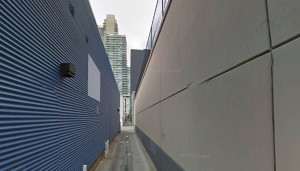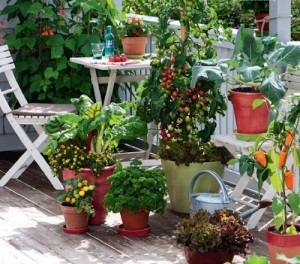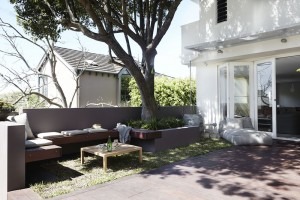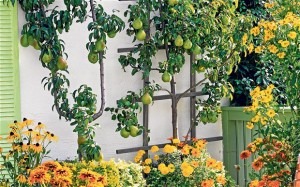 Rachel Reef writes: Have you ever noticed that somehow, the temperature seems to be lower on the outskirts and in the countryside? Yeah, so have I. But when you think of it, it absolutely makes sense with all that concrete downtown. Although the thought of more balmy summer days doesn’t seem like such a bad thing (hello, beach!), the decreasing amount of greenery in our cities means that city microclimates are forming and the heat rise could be affecting our health and bank balances – as well as our planet.
Rachel Reef writes: Have you ever noticed that somehow, the temperature seems to be lower on the outskirts and in the countryside? Yeah, so have I. But when you think of it, it absolutely makes sense with all that concrete downtown. Although the thought of more balmy summer days doesn’t seem like such a bad thing (hello, beach!), the decreasing amount of greenery in our cities means that city microclimates are forming and the heat rise could be affecting our health and bank balances – as well as our planet.
Cities are getting bigger, more polluted and less green, while climate change is becoming increasingly unavoidable. As more and more people are choosing the city-living lifestyle, what does this mean for our dear planet Earth?
The Urban Heat Island Effect
No, our cities aren’t going to turn into tropical islands (unfortunately)! Australian scientists have been conducting a study into the causes of the ‘urban heat island effect’. Essentially, in areas where there is less shade and more buildings (generally the CBD), heat gets trapped and temperatures can be several degrees higher than in the suburbs.
The cause of this is a combination of factors, including lack of vegetation, increased energy use (which emits heat) and the materials used in buildings.
Although this heat increase may not necessarily be felt by everyone, it does impact various areas of our lives. Professor Steffen Lehmann from the University of South Australia who is leading the research – titled The Urban Microclimates Research Project1 – has said that just a one degree drop in city temperatures means a decrease of 5 per cent in energy costs. For businesses and government, in particular, this could mean massive savings – but it would also benefit individuals living in the CBD (no one ever said no to lower energy bills!).
He also says that just a 10 per cent increase in CBD vegetation could help temperatures drop by up to 3°C.
Aside from the impact that increased green areas could have on our planet, it can also improve our mental health. A recent study2 assessed the mental impact of moving from less green areas to more green areas. It found significant evidence to suggest that those that moved to greener areas had much better mental health than before the move. And we don’t need studies to tell us this either – everyone feels more relaxed after a stroll through the park!
A lack of trees also increases the concentration of pollution in the air. Trees feed on carbon dioxide, and in turn they produce the oxygen that we need to live. To us, excess carbon dioxide is poisonous, so the more trees the less of it there is in the atmosphere. Trees also absorb a range of other poisonous gases, making the air healthier for us to breathe.
In fact, just one acre of trees absorbs as much carbon dioxide over a year as a person produces while driving a car over 26,000 miles/41,843 km!
What Part Can We Play?
Did you know that in Havana, Cuba, due to the shortage of fuel and fertilisers, residents were forced to start growing wherever possible, whatever possible? According to FAO, “Havana production in 2012 included 63,000 tonnes of vegetables, 2, 000 tonnes of fruit, 10,000 tonnes of roots and tubers, 10.5 million litres of cow, buffalo and goat milk and 1,700 tonnes of meat.” This means that, not only do they not have a problem with global heating, but they also eat healthy local produce.
In Milan, the Bosco Verticale3 project is just about to be finished. It consists of two residential buildings (more like skyscrapers) with trees planted on every balcony.
Furthermore, urban gardens are not that uncommon any more, and guerilla gardening is counting more and more members each day.
Of course, numerous cities around the world have plans to increase vegetation in urban areas, but residents don’t need to sit around and wait for possibly decades to achieve the benefits that a greener lifestyle can bring. By utilising the space that you have, you can play your small part in slowing down climate change, minimising air pollution and improving your own mental health, and much more.
Not all of us can take part in such outstanding projects or actions. Not all of us have huge gardens, nor is every city’s government so benevolent. So we should use whatever is within our reach.
What are our options? For example, if everyone in a city set up a balcony garden, it wouldn’t take long before a huge increase in vegetation would occur. Not only will you be taking a proactive approach to helping the environment, but studies have shown that gardening can promote mental health through relaxation and satisfaction. If you live in an apartment make your balcony garden work for you by planting herbs and other easy-to-grow vegetables that you can use in your everyday cooking.
 When it comes to what to grow, of course, flowers and shrubs take the throne. However, it does not stop there. Many people have started growing fruit and vegetables on their balconies. These primarily include small plants, and those that do not develop deep roots. Some of those are strawberries, blackberries, tomatoes, various peppers, cucumbers, courgettes, lemons, oranges, fruit salad trees, lettuce, herbs – the list is long and diverse.
When it comes to what to grow, of course, flowers and shrubs take the throne. However, it does not stop there. Many people have started growing fruit and vegetables on their balconies. These primarily include small plants, and those that do not develop deep roots. Some of those are strawberries, blackberries, tomatoes, various peppers, cucumbers, courgettes, lemons, oranges, fruit salad trees, lettuce, herbs – the list is long and diverse.
 Some balconies even can support trees!
Some balconies even can support trees!

But, if you don’t have a balcony or outdoor area, don’t fret – there are still ways to help. Simply cutting down your energy usage and ensuring you have quality home insulation (such as double glazed windows) will minimise the amount of heat you are releasing.
City living doesn’t need to mean giving up a green lifestyle – get creative and welcome some plants into your life!
References
1. The Urban Microlimates Research Project. http://blog.lowcarbonlivingcrc.com.au/2013/tackling-urban-heat/
2. Alcock I1, White MP, Wheeler BW, Fleming LE, Depledge MH. Longitudinal effects on mental health of moving to greener and less green urban areas. Environ Sci Technol. 2014 Jan 21;48(2):1247-55.
3. http://www.stefanoboeriarchitetti.net/en/portfolios/bosco-verticale/
Rachel Reef has long been exploring ways of helping the environment in our ever growing cities. Recently she has been involved in raising awareness of the importance of planting wherever possible. In her free time, she enjoys watching her flowers bloom and walking her dog on the beach.
Related Articles:
Pest Alert: Polyphagous Shot-Hole Borer (PSHB)
The Polyphagous shot-hole borer (known as PSHB; Euwallacea fornicates) is a pest first detected in Australia 2021 in metropolitan Perth. Native to…
Mastering Essential Winter Gardening Skills
As the cold of winter sweep across the landscape, many gardeners in the South of Australia retreat indoors, awaiting the warmth of spring to resume…


